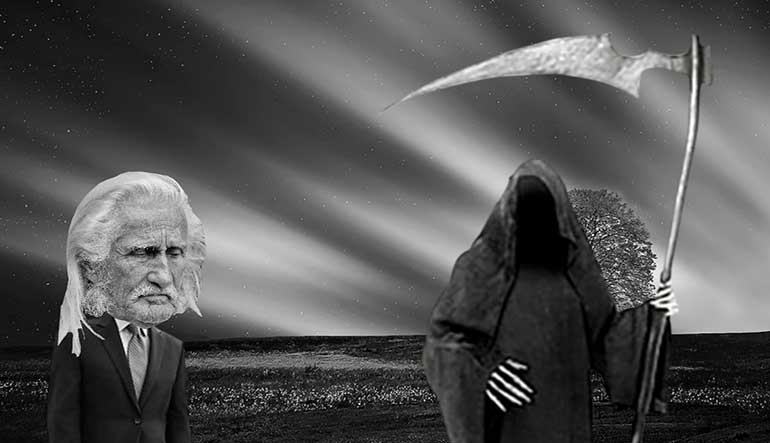ShmoopTube
Where Monty Python meets your 10th grade teacher.
Search Thousands of Shmoop Videos
One Hundred Years of Solitude 8131 Views
Share It!
Description:
One of the bestselling books of all time? Yes, please.
Transcript
- 00:01
One Hundred Years of Solitude: Why does the book jump forward and backward in time so
- 00:06
much? Unless you hop in your super cool homemade
- 00:09
time machine, you most likely expect time to move forward.
- 00:13
Naturally, we expect stories to be told in the same manner.
- 00:16
Sure, novels occasionally divert to a flashback or even a flash-forward, but most tales, like
Full Transcript
- 00:21
life, unfold in a linear fashion. A happens, then b, then c.
- 00:26
So, what’s up with Gabriel Garcia Marquez’s clock in One Hundred Years of Solitude?
- 00:32
Why did he choose to tell this story in such a funky way?
- 00:35
Is it a sneaky tactic to keep us on our toes? The author’s way of making sure we’re
- 00:40
paying attention? Sort of like a little wake-up call. Or a sadist’s
- 00:45
means of exacting pain. Choosing to swing back and forth through time
- 00:50
forces us to stay focused. It’s all about watching an intense tennis match.
- 00:55
And therefore, we’re encouraged to stay alert and not miss any important details.
- 01:00
Marquez is simply ordering us to pay attention by structuring the book this way. We have
- 01:04
to reset our sense of time and timing on a regular basis.
- 01:07
He’s basically challenging us to keep up with him as we follow him on this zigzagging
- 01:12
journey. Or maybe it’s to confuse and disorient the
- 01:14
reader. Sounds devious, but we wouldn’t put it past
- 01:18
him. Maybe Marquez wants us to feel as if we’re
- 01:21
walking inside a dream. Like a Salvador Dali painting, he creates
- 01:25
a dreamlike atmosphere by telling the story this way.
- 01:28
The dreamy concept of time whizzing around is simply there to provide us with a mood.
- 01:33
Marquez puts us under a purple haze-like spell and invites us to see the story through his
- 01:37
dreamy eyes. We enjoy the experience of the story coming
- 01:41
together in bits and pieces, like memories. Or perhaps the title is a clue to the author’s
- 01:46
intentions. Maybe Marquez is trying to make a broader
- 01:49
statement with his time-bending tactic. Maybe it’s his way of saying we are all
- 01:53
woven into the fabric of time. And in a way, we’re all connected.
- 01:58
Maybe the story does its unique dance through time to remind us that beginnings and endings
- 02:02
are not as clear-cut as we would like them to be.
- 02:05
What do you think? Is this video over yet? Or maybe it has just begun…
- 02:17
Shmoop amongst yourselves.
Up Next
This video defines utopias and dystopias, and investigates how a utopia might become a dystopia. Can a seemingly perfect world actually be a dystop...
Related Videos
They say that honesty is the best policy, but Jack lies about his identity and still gets the girl. Does that mean we should all lie to get what we...
Ever wish you could remember everything that you ever studied? How about everything that everyone has ever studied? Yeah, pretty sure our brains ju...
Ralph Ellison's Invisible Man is an American classic. Hope you're not expecting any exciting shower scenes though. It's not that kind of book.
Do not go gentle into that good night. In fact, if it's past your curfew, don't go at all into that good night. You just stay in your good bed and...




